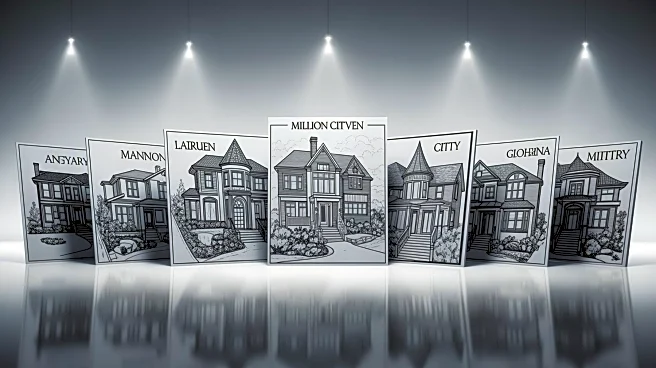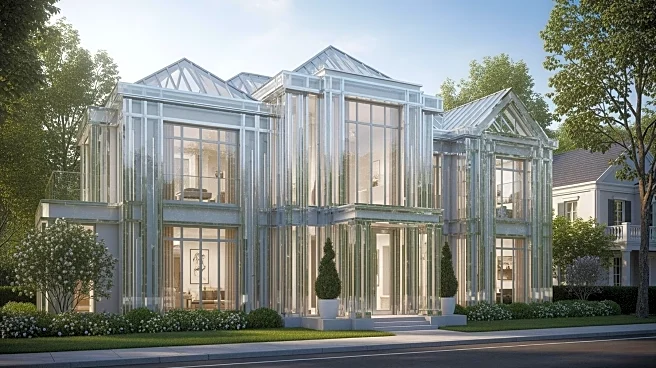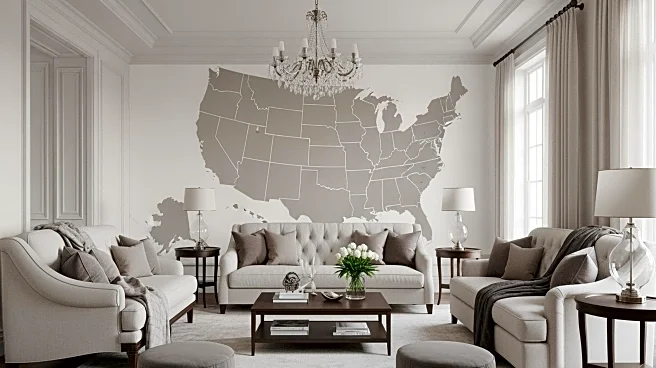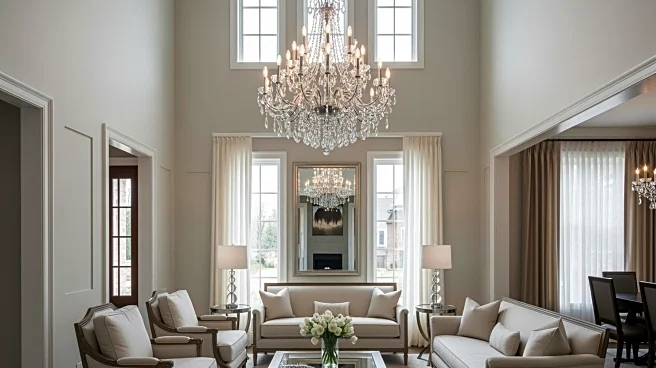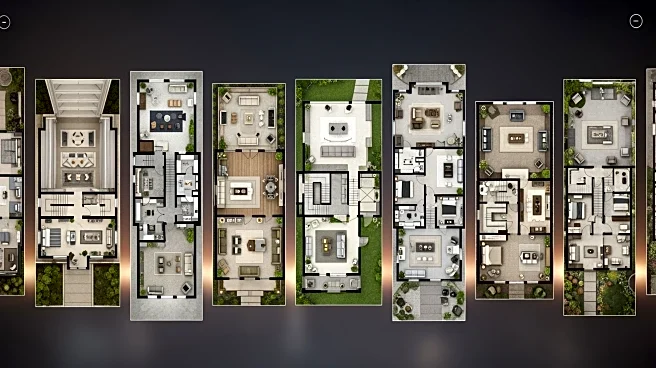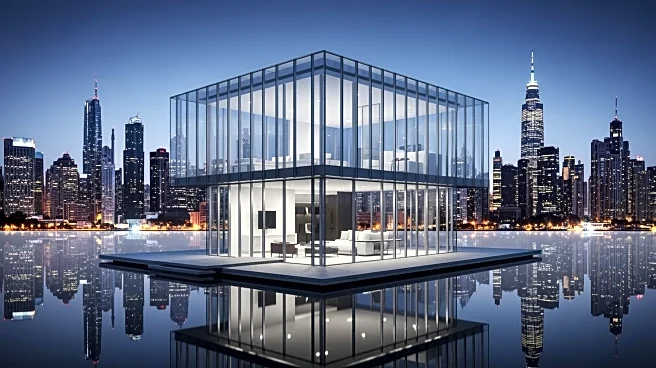What's Happening?
Realtor.com has released its September Luxury Housing Report, which highlights the varying sizes of homes that a $1 million to $2 million budget can purchase across different U.S. cities. The report reveals that the national median size for homes in this
price range is 2,994 square feet. However, in cities like Atlanta, Georgia, buyers can expect significantly more space, with homes averaging around 4,500 square feet. Similarly, cities in Colorado such as Denver, Aurora, and Centennial offer homes with a median size of 4,272 square feet. In contrast, coastal cities like Urban Honolulu, Hawaii, and several Californian cities, including San Jose, Sunnyvale, and Santa Clara, offer much less space, with homes averaging 1,651 and 1,688 square feet, respectively. The report also notes a decline in the national luxury threshold to $1.24 million, marking a 0.5% drop from August and a 2.4% decrease year over year.
Why It's Important?
The report underscores significant regional disparities in the U.S. housing market, particularly in the luxury segment. These differences highlight the varying real estate values and living standards across the country, influenced by factors such as location desirability, economic conditions, and local market dynamics. For potential homebuyers, especially those looking to invest in luxury properties, understanding these disparities is crucial for making informed purchasing decisions. The findings also reflect broader economic trends, such as the impact of remote work on housing preferences and the ongoing shifts in urban versus suburban living. Real estate developers, investors, and policymakers can use this data to strategize and address housing demands effectively.
What's Next?
As the housing market continues to evolve, potential buyers and investors may need to adjust their strategies based on these regional differences. The ongoing economic conditions, including interest rates and inflation, will likely influence future trends in the luxury housing market. Additionally, cities that offer more space for the same budget may see increased demand, potentially driving up prices and altering local market dynamics. Policymakers and urban planners might also consider these trends when developing housing policies and infrastructure projects to accommodate changing population needs.
Beyond the Headlines
The report's findings may also have cultural and social implications, as they reflect broader lifestyle changes and preferences. The shift towards larger homes in less densely populated areas could indicate a growing desire for more personal space and privacy, possibly accelerated by the pandemic. This trend might also influence community development, local economies, and even environmental considerations, as urban sprawl and resource consumption patterns change.
